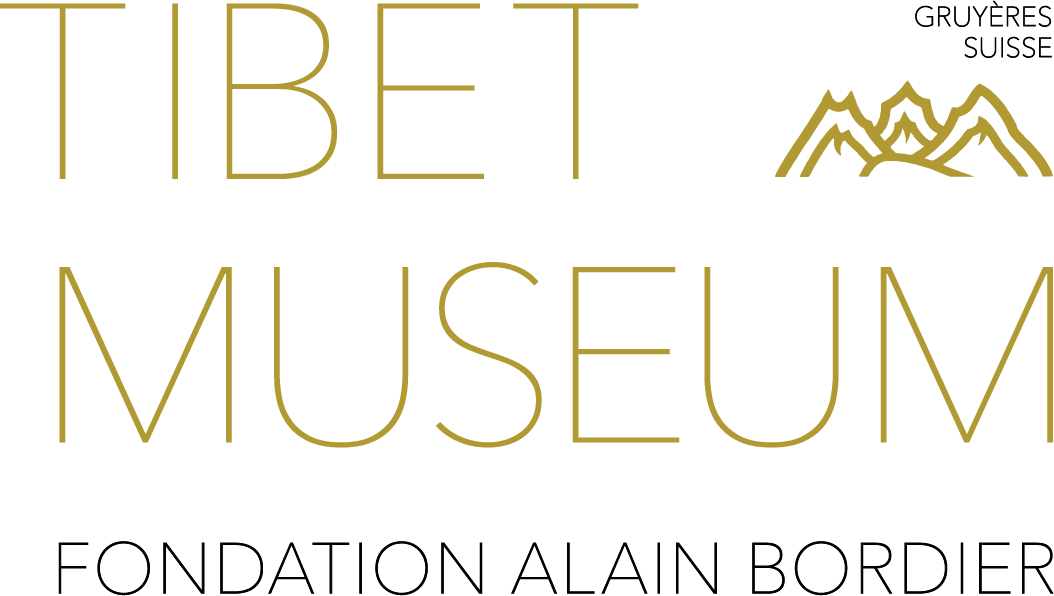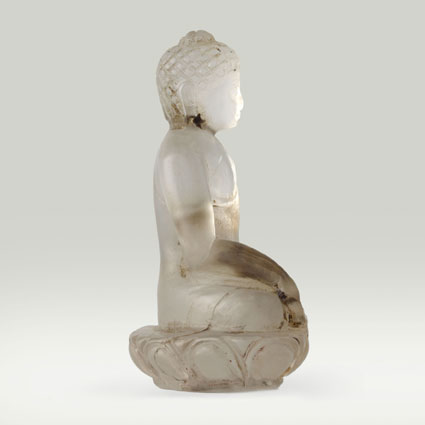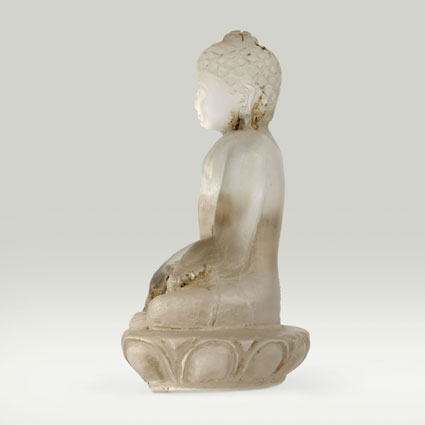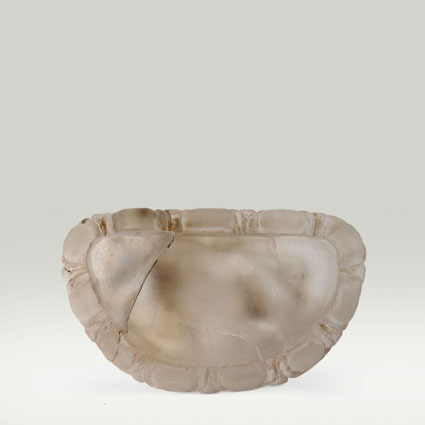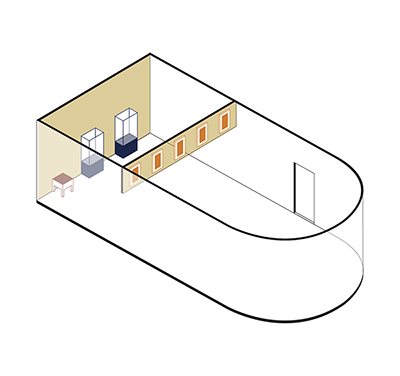ABS 189
Code: ABS 189
Country: Tibet
Style:
Date: 1700 - 1600
Dimensions in cm WxHxD: 5 x 5.5 x 3.1
Materials: Crystal
Buddha Shakyamuni – The Historical Buddha
The Buddha is seated legs crossed in meditation on a lotus pedestal, his religious garment leaving his right shoulder uncovered. With his right extended hand, he touches the ground before him while his left rests on his lap in contemplation. This posture refers to the episode of his victory over Mara, god of Death and illusion when, by touching the ground he took the Earth as a witness of his spiritual realisation. He is endowed with all the distinctive marks and signs of a “great being:” short curly hair, a cranial protuberance (ushnisha), a curl of hair between the eyebrows (urna), elongated earlobes, and three marks on the throat, and so on.
This rock crystal image of Buddha Shakyamuni was probably carved by a Newari craftsman from the Katmandu Valley during the 16th or 17th centuries. Rock crystal sculptures are generally difficult to date, as the date of manufacture does not necessarily correspond with the stylistic impression.
A Buddha is an “Enlightened One”, awakened to the true nature of existence. He has transcended is human condition and is “no longer a man, nor a god”. He has reached nirvana – “the extinction” of desire and karma – and he is free from samsara, the endless cycle of existence and suffering. A Buddha generally appears as a renunciant, devoid of ornaments.
The Buddha is seated legs crossed in meditation on a lotus pedestal, his religious garment leaving his right shoulder uncovered. With his right extended hand, he touches the ground before him while his left rests on his lap in contemplation. This posture refers to the episode of his victory over Mara, god of Death and illusion when, by touching the ground he took the Earth as a witness of his spiritual realisation. He is endowed with all the distinctive marks and signs of a “great being:” short curly hair, a cranial protuberance (ushnisha), a curl of hair between the eyebrows (urna), elongated earlobes, and three marks on the throat, and so on.
This rock crystal image of Buddha Shakyamuni was probably carved by a Newari craftsman from the Katmandu Valley during the 16th or 17th centuries. Rock crystal sculptures are generally difficult to date, as the date of manufacture does not necessarily correspond with the stylistic impression.
A Buddha is an “Enlightened One”, awakened to the true nature of existence. He has transcended is human condition and is “no longer a man, nor a god”. He has reached nirvana – “the extinction” of desire and karma – and he is free from samsara, the endless cycle of existence and suffering. A Buddha generally appears as a renunciant, devoid of ornaments.
